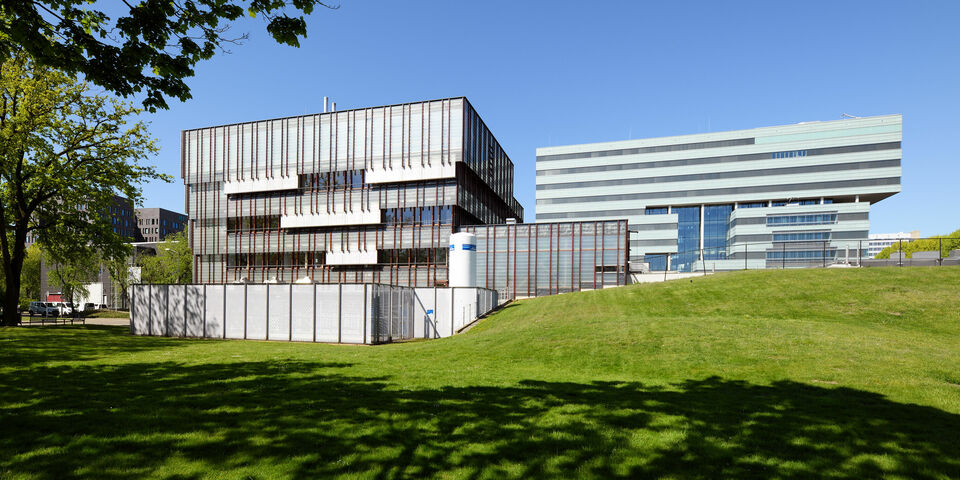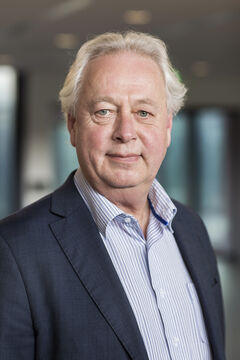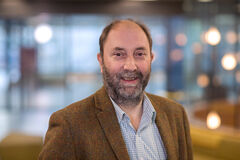ESoE and AP join forces in new department
As of early 2022, Eindhoven School of Education (ESoE) and Applied Physics (AP) will join forces in a new department. Its name: Applied Physics and Science Education. The teacher trainers and educational innovators at ESoE will soon move to the Cascade building. As far as ESoE director Jan Vermunt is concerned, this ‘marriage’ will lead to synergy in a variety of ways: more teachers, more physics students and more educational innovation. “But at the same time, we won’t lose sight of collaboration with other departments.”
Since its establishment in 2006/2007, Eindhoven School of Education (ESoE) functioned as an independent expertise center for a short while, headed by former rector Hans van Duijn. It then functioned as School under the coordination of the departments of Chemical Engineering and Chemistry and Mathematics and Computer Science successively.
The organizational embedding in these two particular departments is no coincidence. After all, they offer programs that correspond to two subjects taught in high schools: chemistry and math. In principle, Built Environment or IE&IS students can also opt for a Master of Education, but they first need to follow a preparatory pre-master’s program to gain sufficient theoretical knowledgeand academic skills.
When people talk of math and chemistry, they inevitably talk of physics in the same breadth. That is why it was self-evident that the department of Applied Physics (AP) would become ESoE’s new host when it was time to rotate again.
“However, we jointly arrived at the conclusion that it would be a good idea to collaborate more closely than solely on management aspects. Dean Gerrit Kroesen is education-minded, and AP is a department that focuses on educational innovation,” says Jan Vermunt, professor of Learning Sciences and Educational Innovation and scientific director of ESoE.
CBL lab
That’s because ESoE’s focus lies not just on minors and masters for prospective teachers and on scientific research into education and technical subjects in high schools. These subjects, incidentally, are grouped together under the term ‘STEM education’ nowadays, short for Science, Technology, Engineering and Mathematics. Specifically, ESoE educates teachers of mathematics, physics, chemistry, infomatics and Research & Design (R&D).
The institute also contributes to the development of educational innovation at TU/e, for example in the field of Challenge Based Learning (CBL), Vermunt says. “We already collaborate on CBL projects with AP, and the department is about to open a special CBL lab in the near future, which we will be able to use as well, just like the other departments.”
Ideally, this collaboration will also result in the intake of new students: the proximity of ESoE students might inspire AP students to (also) opt for a Master of Education. “And there are opportunities vice versa as well: we have close ties with a large network of high schools – including the so-called Technasia –, the students of which are potential future AP students. It would be great if high school and university students could collaborate on a CBL project, for example.”
A potential “win-win situation,” according to Vermunt, who at the same time stresses that ESoE won’t lose sight of collaboration with other departments. That collaboration will be safeguarded in an advisory council, on which both the schools and the departments with which ESoE collaborates in the field of teacher training and/or or educational innovation will serve.
Cascade
The new department of Applied Physics and Science Education will soon be a reality, the target date in January 2022. “But we will soon be moving, as early as November 18, from floor 11 in Atlas to the spaces of AP in the Cascade building, where room has been made available for us after several rearrangements and refurbishments,” Vermunt says. ESoE has sixty staff members in total, ranging from support and scientific staff to teachers who have been seconded by high schools.
What will ESoE’s administrative position look like in the new department? After all, AP is much larger. Vermunt: “The Department Board will cover both AP and ESoE, and both AP and ESoE will be approached by the confidential committee when there is a vacancy. An advisor representing ESoE will always join the Department Board during the decision-making process.”
Identity
Vermunt is glad that staff participation will also be properly arranged as of January 1. “Our staff members can stand for election and cast their votes for the Department Council.” An added advantage of the merger is that ESoE and AP will be represented in the consultation among deans from now on. “We used to fall between two stools and were sometimes invisible in the organizational structure because we were an autonomous unit instead of an actual service or department.”
Both ESoE and AP will retain their own identities, Vermunt stresses in conclusion: “We’ve both built good names among our national and international contacts. The name Eindhoven School of Education will therefore not disappear, but it was simply too long to include in the new department’s name, that is why we opted for ‘Science Education.’”
“Closer interaction with ESoE educationalists”
What does Applied Physics think of the upcoming merger with ESoE? Dean Gerrit Kroesen sees many advantages: “Such as an intensified and closer interaction with ESoE’s educationalists as we explore innovations in education. We’re also glad to join ESoE’s enormous expertise in the field of outreach, contacts with high schools, et cetera.”
The idea of the merger came from rector Frank Baaijens, Kroesen says: “He was the first to propose the idea of creating a new department.” Both AP and ESoE will have a say in the new department’s board.
“In principle, each member of both AP’s and ESoE’s scientific staff can be asked by the Executive Board to move into a management position, provided that there is sufficient support. When there’s no ESoE representative on the board, the board meetings will be attended by a regular ESoE advisor.” In practice, the difference between advisor and board member “won’t be that significant,” Kroesen stresses: “The management style will be collegial, without too much regard for official titles.”
A similar construction will apply to the Department Council: “Should the board discuss an issue regarding ESoE without an ESoE representative being present, an ESoE advisor can be called in.”




Discussion